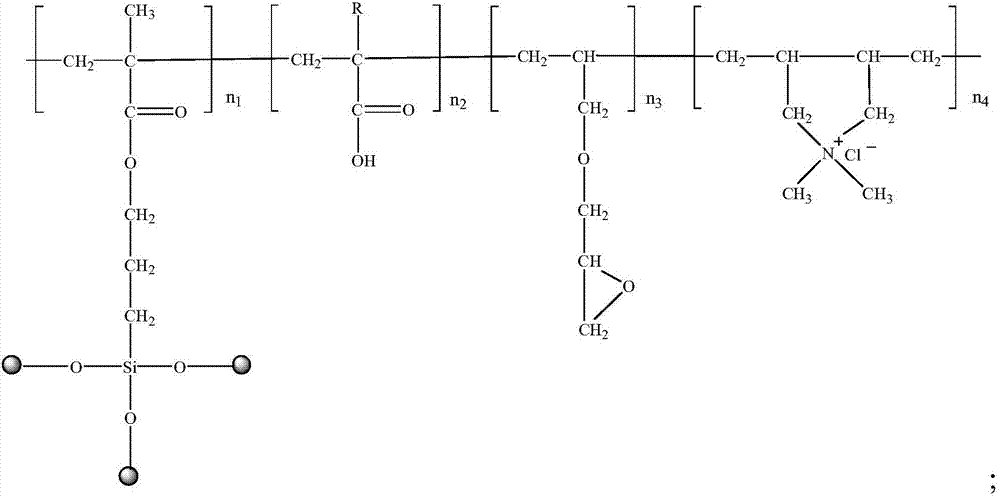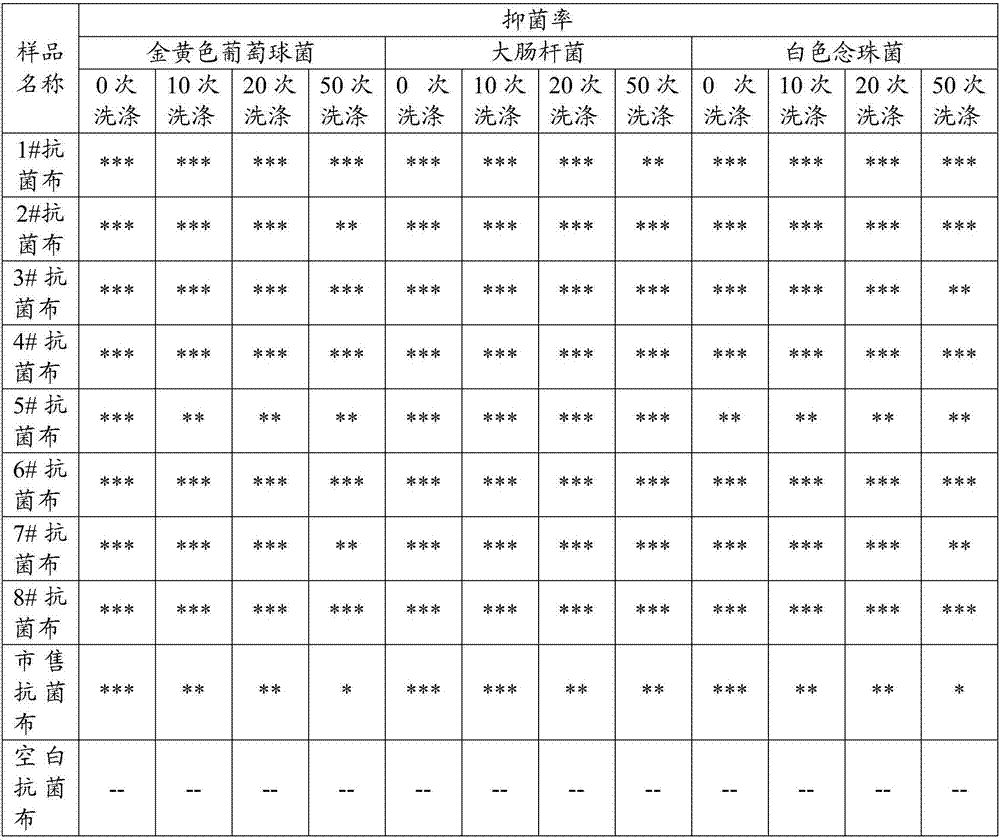Preparation method of composite antibacterial finishing agent
A compound antibacterial and finishing agent technology, which is applied in fiber treatment, biochemical fiber treatment, textiles and papermaking, etc., and can solve problems such as easy wash-off, inability to exert the antibacterial effect of nano-zinc oxide for a long time, and shedding.
- Summary
- Abstract
- Description
- Claims
- Application Information
AI Technical Summary
Problems solved by technology
Method used
Image
Examples
preparation example Construction
[0026] The preparation method of the composite antibacterial finishing agent of one embodiment, comprises the following steps:
[0027] Step S110, using a silane coupling agent containing double bonds to modify the nano-zinc oxide to obtain active nano-zinc oxide.
[0028] In one embodiment, the silane coupling agent containing double bonds is γ-methacryloxypropyltrimethoxysilane.
[0029] In one of the embodiments, the step of modifying nano-zinc oxide to obtain active nano-zinc oxide with a silane coupling agent containing a double bond is specifically:
[0030] Step S111 , after mixing nanometer zinc oxide, γ-methacryloxypropyltrimethoxysilane and a solvent, ultrasonically dispersing to obtain a dispersion liquid.
[0031] Preferably, ultrasonic dispersion is performed for 1 hour to obtain a dispersion.
[0032] Preferably, the mass ratio of nanometer zinc oxide to γ-methacryloxypropyltrimethoxysilane is 1:1˜1:5.
Embodiment 1
[0067] (1) Preparation of active nano-zinc oxide: Mix 1.0g nano-zinc oxide, 40g ethanol, 18g water and 4g γ-methacryloxypropyltrimethoxysilane evenly, and ultrasonically disperse for 1h to obtain a dispersion liquid, and heat it at 60°C The water bath was refluxed for 12 hours, then cooled to room temperature, and the dispersion was centrifuged and washed to obtain active nano-zinc oxide;
[0068] (2) Synthesis of composite antibacterial finishing agent: first, 4.2 g of ammonium persulfate was dissolved in 10 g of deionized water to obtain ammonium persulfate aqueous solution, which was divided into three equal parts. Then 0.9g active nano-zinc oxide, 25g dimethyl diallyl ammonium chloride, 58.8g deionized water, 0.6g acrylic acid, 0.3g allyl glycidyl ether, and 4.2g ammonium persulfate aqueous solution were added to the three-necked flask , stir evenly, then heat in a water bath to 80°C, and react for 15 minutes; then add dropwise 0.6g of acrylic acid, 0.3g of allyl glycidyl ...
Embodiment 2
[0070] (1) Preparation of active nano-zinc oxide: Mix 1.0g nano-zinc oxide, 40g ethanol, 18g water and 4g γ-methacryloxypropyltrimethoxysilane evenly, and ultrasonically disperse for 1h to obtain a dispersion liquid, and heat it at 60°C The water bath was refluxed for 12 hours, then cooled to room temperature, and the dispersion was centrifuged and washed to obtain active nano-zinc oxide;
[0071] (2) Synthesis of composite antibacterial finishing agent: first, 4.2 g of ammonium persulfate was dissolved in 10 g of deionized water to obtain ammonium persulfate aqueous solution, which was divided into three equal parts. Then 0.2g active nano zinc oxide, 25g dimethyl diallyl ammonium chloride, 59.5g deionized water, 0.6g acrylic acid, 0.3g allyl glycidyl ether, and 4.2g ammonium persulfate aqueous solution were added to the three-necked flask , stir evenly, then heat in a water bath to 80°C, and react for 15 minutes; then add dropwise 0.6g of acrylic acid, 0.3g of allyl glycidyl ...
PUM
 Login to View More
Login to View More Abstract
Description
Claims
Application Information
 Login to View More
Login to View More - R&D
- Intellectual Property
- Life Sciences
- Materials
- Tech Scout
- Unparalleled Data Quality
- Higher Quality Content
- 60% Fewer Hallucinations
Browse by: Latest US Patents, China's latest patents, Technical Efficacy Thesaurus, Application Domain, Technology Topic, Popular Technical Reports.
© 2025 PatSnap. All rights reserved.Legal|Privacy policy|Modern Slavery Act Transparency Statement|Sitemap|About US| Contact US: help@patsnap.com


